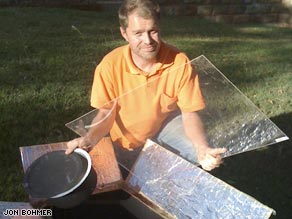(Its Jammin Friday but don’t tell anyone – http://www.youtube.com/watch?v=x0d1HilfLxA )
But I post the title and what follows just to show the difference between a forward looking country concerned about the world and a backward looking State like Illinois as best exemplified by the
ILLINOIS ENVIRONMENTAL REGULATORY GROUP.
You would think with a name like that they would be concerned about the environment, right? But in the never never land that is Springfield they are more concerned about keeping profits high and the STATE at bay.
I also find it interesting that I had to go to the second GOOGLE page to get remotely close to the original article published in 2007 by UPI
:}
OSLO, Norway, May 23 (UPI) — Norwegian lawmakers are working on a proposal that could lead to a ban on the sale of gasoline-powered cars, a published report said Wednesday.
Ruling Labor, Socialist Left and Center party members of the Parliament’s transportation committee have aired the proposal, and the Transport Ministry is determining if such a ban would be legal, Oslo’s Verdens Gang newspaper reported.
“This is not a problem to arrange,” Labor transportation committee member Truls Wickstrom said. “In Brazil over 80 percent of cars sold run on bioethanol.”
“Most of the major car makers are banking on flexi-fuel,” Wickstrom said.
A flexible-fuel vehicle, or dual-fuel vehicle, has two fuel tanks and can alternate between, for instance, gasoline and bioethanol, also known as gasohol.
Banning sales of gasoline-powered cars “would pressure the automobile industry into developing technology faster than it otherwise would,” Center Party committee member Jenny Klinge said.
:}
( http://www.youtube.com/watch?v=T58A2w61dD4&feature=related )
http://www.thetruthaboutcars.com/norway-considers-banning-petrol-powered-cars/
So this was 2 years ago at least:
Norway Considers Banning Petrol-Powered
Cars
By Frank Williams
October 12, 2007

No seriously. The Kingdom of Norway may become the first nation on God’s green Earth to ban all gasoline-only cars. Citing Brazil’s success with bioethanol as their rationale, Norwegian lawmakers are considering ditching petrol-only machines completely, in favor of biofuel-powered transportation. The United Press International reports that Center Party committee member Jenny Klinge feels banning sales of gasoline-powered cars to her country’s 4.7m residents “would pressure the automobile industry into developing technology faster than it otherwise would.” The Norwegian Transport ministry is trying to determine if such a ban would be legal. Meanwhile, Norway’s many corn, soybean, and sugar cane farmers are excited about the prospects of a new market for their crops.
:}
But here is IERG’s response if you believe Deedee Hirner Executive Director:
http://www.sj-r.com/archive/x1098184794/Letters-to-the-Editor-April-26
Making ‘polluters’ pay a disingenuous idea
Ron Burke’s suggestion for solving Illinois’ budget woes (“OK clean-energy law to help achieve 2 goals,” April 15) sounds painless — “making polluters pay.” He offers this, rather than increasing taxes, to raise billions to shore up state revenues. We believe Burke’s suggestion is disingenuous.
“Polluting businesses” provide gasoline to fuel our cars, electricity for light, heat, computers and high-def televisions, laundry detergents, beverage sweeteners and toothpaste. “Polluters” provide products that we, the consumers, demand. To promote “they” will pay more while “we” pay less is nothing more than a verbal shell game.
Burke states that Illinois is a significant contributor to global warming, and it is time to take responsibility for our emissions. We note that since 1980, Illinois’ population has increased 32 percent, vehicle miles traveled increased 101 percent and energy consumption increased 29 percent, while overall emissions decreased 49 percent.
Further, according to the World Resources Institute that facilitated the Illinois Climate Change Advisory Group’s work, since 1990, greenhouse gas emissions in the transportation and residential sectors increased 18 percent and 3 percent, respectively, while those in the industrial energy sector decreased by 14 percent. It would appear that Illinois industry already has, to paraphrase Burke, seized the opportunity to get ahead of the curve.
Congress is expected to act soon on climate-change legislation. We believe the federal, not single- or five-state regional level, is the appropriate place for action. Burke implies opposition to regional regulation stems from a desire to hide. We strongly disagree — over-arching national policy evens the playing field for business and industry across all states.
Finally, a clean-energy law cannot achieve two goals. Proponents of charging for emissions to reduce global warming advocate that fees be revenue neutral. Revenue is not to be retained by government to solve budgets woes, but refunded to energy users to mitigate “negative impacts,” or provide incentives to reduce CO2 emissions.
Deirdre K. Hirner
Executive director
Illinois Environmental
Regulatory Group
Springfield
:}
( http://www.youtube.com/watch?v=3kXj1hmDI7Q&feature=related )
Yah THESE PEOPLE
REGULATORY GROUP
IERG’s primary objective is the development and negotiation of environmental regulations and laws in Illinois. IERG is committed to the principle that environmental regulation and policy be grounded on sound science and produce demonstrated environmental improvements commensurate with the costs involved for compliance.
Because of the diversity of these regulations – and the way in which responsibilities are spread over state government – IERG is involved with an ever expanding universe of state agencies and departments. To this end, IERG expends effort to actually draft both regulatory language and detailed comments on proposals put forth by the regulatory agencies. On behalf of IERG members, staff is involved early in the effort to provide sound and technically defensible input throughout the regulatory, policy or legislative process.
:}
That Hang out with THESE PEOPLE:
|
Abbott Laboratories Ameren Services Company Archer-Daniels-Midland Company Atlantic Richfield Company Aventine Renewable Energy, Inc. Bunge North America, Inc. Buzzi Unicem USA, Inc. Cabot Corporation Caterpillar Inc. Chrysler Corporation CITGO Petroleum Corporation Cognis Corporation Commonwealth Edison Company Conooco Phillips Petroleum Company Corn Products International, Inc. Deere & Company Dominion Kincaid Generation, LLC The Dow Chemical Company Duke Energy Dynegy Midwest Generation Electric Energy, Inc. Equistar Chemical, LP ExxonMobil Corporation Flint Hills Resource,. LLC Flint Hills Resources (Huntsman) G.E. Plastics
|
General Mills Illinois Cement Kinder Morgan Inc. Lonza Inc. Marathon Petroleum Company LLC MGP Ingredients Midwest Generation EME, LLC Morris Cogeneration, L.L.C. Nicor Gas Company Nucor Steel Kankakee, Inc. Olin Corporation ONDEO Nalco Company Peabody Coal Peoples Energy Prairie Power, Inc. S & C Electric Company The Sherwin-Williams Company The Solae Company Southern Illinois Power Cooperative Springfield City Water, Light & Power Stepan Company Sterling Steel Company, LLC Tate & Lyle United States Steel Granite City Works Viscofan USA, Inc. Waste Management, Inc. |
(Expanded Executive Committee)
| Chairman & Manufactured Equipment, Materials, David Long
Vice Chairman & Secretary & Chemicals Sector
Treasurer & Oil Sector |
Utilities Sector Past Chairman & Food & Pharmaceutical Sector Alan Jirik President & CEO, IERG Executive Director |
:}
Why don’t I just write a Letter to the Editor? The State Journal Register quit printing mine.
( http://www.youtube.com/watch?v=79UU8kcEG5I )
Nuff said.
( http://www.youtube.com/watch?v=N3jhja8rIMc&feature=related )
:}






 The DNR has made this site available to our cooperative to enable us to generate clean, renewable energy for use by our members. All electricity produced by the turbine is fed through our Farmersville substation to power up to 370 homes and farms in the surrouding countryside.
The DNR has made this site available to our cooperative to enable us to generate clean, renewable energy for use by our members. All electricity produced by the turbine is fed through our Farmersville substation to power up to 370 homes and farms in the surrouding countryside.




 No Gas to Mess With
No Gas to Mess With Easy Starting
Easy Starting Environmentally Conscious
Environmentally Conscious













